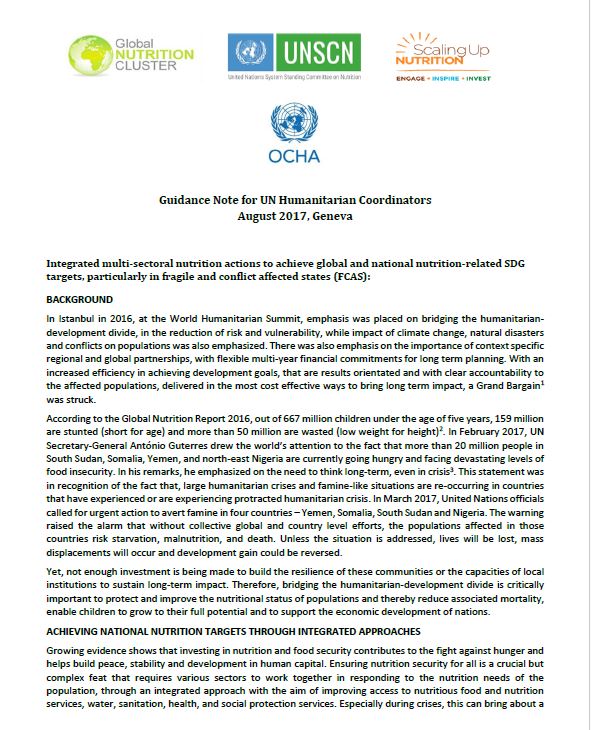Nutrition and crises
Guidance Note for UN Humanitarian Coordinators: Integrated multi-sectoral nutrition actions - Nutrition Cluster

Integrated multi-sectoral nutrition actions to achieve global and national nutrition-related SDG targets, particularly in fragile and conflict-affected states
Reaching the most vulnerable populations through a collective multi-sectoral approach in times of crises will save lives and play a significant role in reducing and preventing malnutrition as well as lay the foundations for early recovery and resilience-building. To achieve this, the humanitarian community must utilize joint needs assessments/analysis, joint action planning and evaluating the impact, and nutrition indicators of all forms of malnutrition. Under the leadership of Humanitarian Coordinators, Common Results Frameworks for all sectors/clusters must be established in HRPs. Frameworks should include clear contributions from each sector that will be monitored and reported upon. In addition, tapping in a wider range of national nutrition platforms and aid modalities allows nutrition stakeholders to respond more flexibly to various and context-specific challenges.
Addressing malnutrition is a collective responsibility that requires strategic and operational leadership at a multi-sector level. Humanitarian Coordinators lead the 2017-2018 Humanitarian Response Planning (HRP) process and play a critical role in ensuring that nutrition is a strategic outcome in response plans, and making sure that coordination is geared toward supporting multi-sectoral approaches to nutrition. The Guidance Note for UN Humanitarian Coordinators: Integrated multi-sectoral nutrition actions to achieve global and national nutrition-related SDG targets, particularly in fragile and conflict-affected states (FCAS), has been prepared to support them in their leadership in this regard. The paper defines malnutrition, explains why addressing malnutrition is life-saving in emergencies and calls for a multi-sector approach, and it gives an overview of common interventions and terminology.
Guidance Note for UN Humanitarian Coordinators





